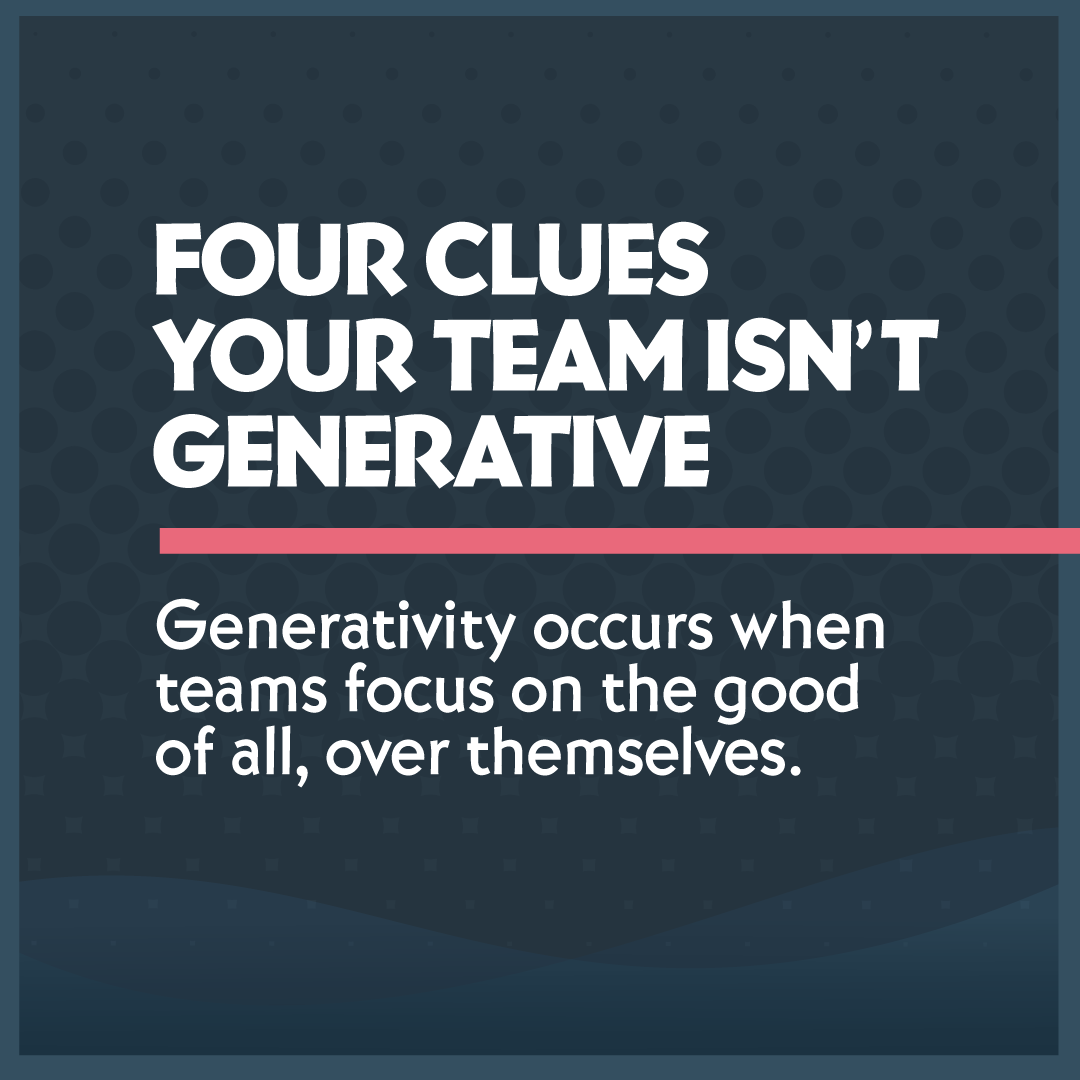
What is generativity?
Generativity is a mindset in which people choose to transcend their own interests to contribute their efforts to a greater purpose. Generativity means creating or nurturing new ideas, concepts, research, or innovations that will last beyond its creator’s lifetime. It requires the creator to “rise above” their particular interests to contribute to “the many” beyond themselves. For leaders and teams in organizations, it’s about being productive, creative and innovative to make changes in the company or its products in a way that contributes beyond that entity to serve the interests of a larger community beyond it. For example, a company that commits to have all products be environmentally friendly to help solve the complex problem of global warming.

Why does generativity matter?
For individuals, generativity represents the ultimate goal any leader or individual could achieve before retirement and leave a legacy. The term generativity comes from Erik Erikson’s theory of human development. In this theory, people naturally experience conflicts at different stages of their lives. During the end of the working years, the existential conflict is between generativity and stagnation. Resolving this conflict by contributing broadly to the next generations is healthy for the individual and society. Personal evolution invites us to answer existential questions that arise as an inner conflict in a way that allows us to advance to the next stage of our psychological development and ultimately be a contributor to the world we live in, beyond our life. If we are not aware of the natural stages of identity/personality development, we may not understand or embrace the changes we inevitably face at certain stages of life. There is something valuable in knowing that these crisis moments are natural and even essential to our growth and development.
Can a whole team be generative?
Teams can be generative when they have a clear and compelling purpose, and everyone is committed to a journey of continuous growth and development. Not everyone has to operate with a generative mindset, but the leader definitely must. Individuals on the team can align with the overarching purpose that is generative, and as long as they are each committed to growth, they can quickly self-regulate and stay agile enough to adapt with the rest of the team.

Four behaviors that stop generativity in its tracks.
If your team is not continuously open to learning and growing, there’s probably something else going on that is stealing time from team productivity, creativity, and innovation. That something is not about working. More than likely, it’s subtle (or not-so-subtle) ego-drama and office politics that are not productive and waste our most sacred asset - time. It manifests in four specific ways.
- Power-seeking & dominating. When people on a team become competitive, they are no longer working as a team and may even be working against each other. For example, suppose one leader is jockeying for more territory or FTEs - a behavior that often comes at the expense of another leader in the company, who is technically on the same team yet loses.
- Status-seeking & diminishing. When people on a team seek to be superior to one another, they are focused on propping up their own ego rather than being open to learning from others. For example, if one person feels inferior and spends too much time seeking awards, degrees, titles, and other forms of status, their effort does not contribute to others or the team.
- Approval-seeking & blaming. When people on a team strive to be liked by others, they spend too much time being artificial and inauthentic. They stay silent instead of voicing a potentially unpopular opinion. However, this backfires because it withholds information that could help someone. It can also backfire on the individual withholding because the critique will likely come out passive-aggressively by subtly blaming others, which erodes trust in relationships.
- Attention-seeking & fabricating. When people on a team strive to be special at the expense of others, they are more intent on being different than contributing to the team’s goal. This prevents them from being grounded in reality, and as a result, they are seen as selfish and rebellious. This can become polarizing and divisive because they are intent on spinning stories about how they are right, and others are just holding them back.
When people are striving in one of these seeking modes, they inevitably trigger divisive behavior in others too. They steal energy from productivity and generativity. This happens because all four patterns are self-serving attempts to make one individual feel better about themselves at the expense of others. This blocks generative goals for the whole team. Generativity is only possible when team members have a healthy self-concept and can focus on the good of all, over themselves. When we are progressing toward generativity, we are not focused on manipulating others but instead are focused on how we can grow and contribute responsibly over time.





